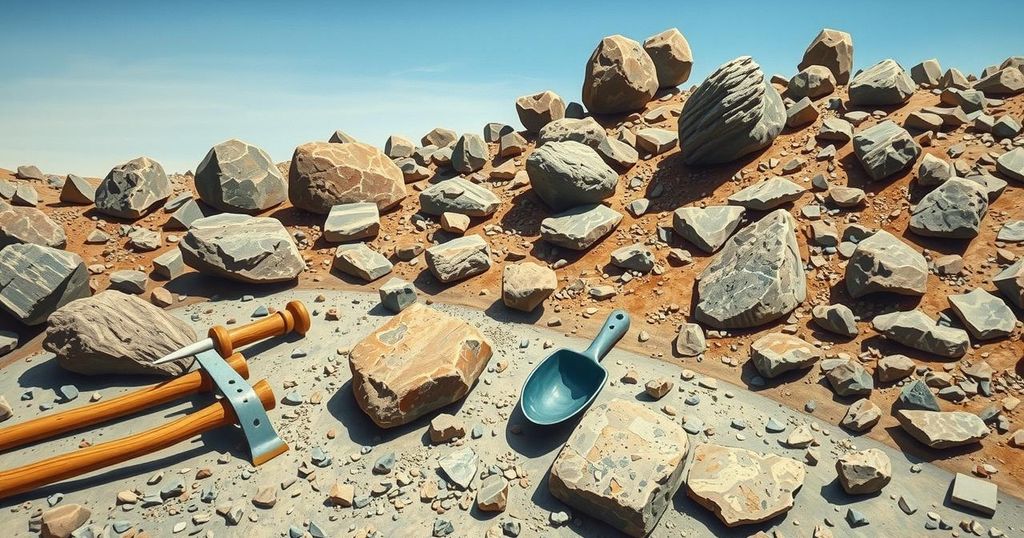Brazil and the U.S. have restarted joint mineral exploration efforts, focusing on key minerals like rare earth elements and lithium. Following a brief suspension, cooperation was reaffirmed due to a Supreme Court ruling. The initiative targets three main regions and incorporates scientific collaboration and training for researchers, highlighting the strategic importance of critical minerals.
Brazil and the United States have recommenced joint efforts to explore critical minerals within Brazilian territory, as per an agreement signed last year. This partnership initially aimed to conduct studies in Minas Gerais, Goiás, and a region covering Rio Grande do Norte and Paraíba, focusing on key minerals such as rare earth elements, lithium, tin, and cassiterite. Initial sample collection commenced in the previous year.
In January, the U.S. Department of State announced a halt to the cooperation. However, in March, the U.S. government reversed its decision and reaffirmed its commitment to the agreement, citing a U.S. Supreme Court ruling that mandates the completion of pre-existing agreements. Francisco Valdir Silveira, the director of Geology and Mineral Resources at the Geological Survey of Brazil, emphasized this point.
Mr. Silveira stated that progress was feasible since the agreement had been signed, funding was allocated, and Deloitte was contracted for consulting services. This notification was given to Brazil during a meeting at the Prospectors & Developers Association of Canada (PDAC 2025) Annual Convention, held in Toronto, which is recognized as a major event in the mining sector.
Critical minerals, pivotal for producing electric vehicle batteries, cell phones, solar panels, semiconductors, and military applications, are increasingly seen as strategic resources. Brazil has significant potential to emerge as a major global producer of these minerals, currently dominated by China. The U.S., under President Biden’s administration, has been pursuing international agreements to access critical minerals, intending to diminish reliance on Chinese supplies.
The cooperation agreement remains a limited pilot initiative, engaging both U.S. and Brazilian specialists in identifying mineral deposits. It designates three primary regions for the initial research phase: the Seridó/Borborema region, the Alto Paranaíba region in Minas Gerais, and the tin province of Goiás. Specialists aim to gather comprehensive data on potential reserves of rare earths and other minerals in these areas, with focused field activities slated for 2025.
The agreement also includes provisions for training three SGB geophysicists through the U.S. Geological Survey and offers scholarships for Brazilian researchers to study mineral deposits in Finland, which share geological similarities with Brazil. Mr. Silveira revealed that while U.S. financial support for the project is modest, the crucial advantage lies in fostering scientific collaboration for larger future projects.
Although the U.S. State Department’s press office declined to comment on the agreement, Mr. Silveira’s outlines highlight the partnership’s potential in advancing scientific research and exploration efforts.
In conclusion, the renewed cooperation between Brazil and the United States in the exploration of critical minerals underscores the strategic importance of these resources in modern technology and military applications. Brazil’s rich mineral potential combined with U.S. expertise signifies a promising collaboration aimed at enhancing both nations’ mineral resource capabilities, while fostering scientific development for future projects. The partnership not only aims to identify valuable mineral deposits but also emphasizes training and educational initiatives for Brazilian researchers.
Original Source: valorinternational.globo.com




